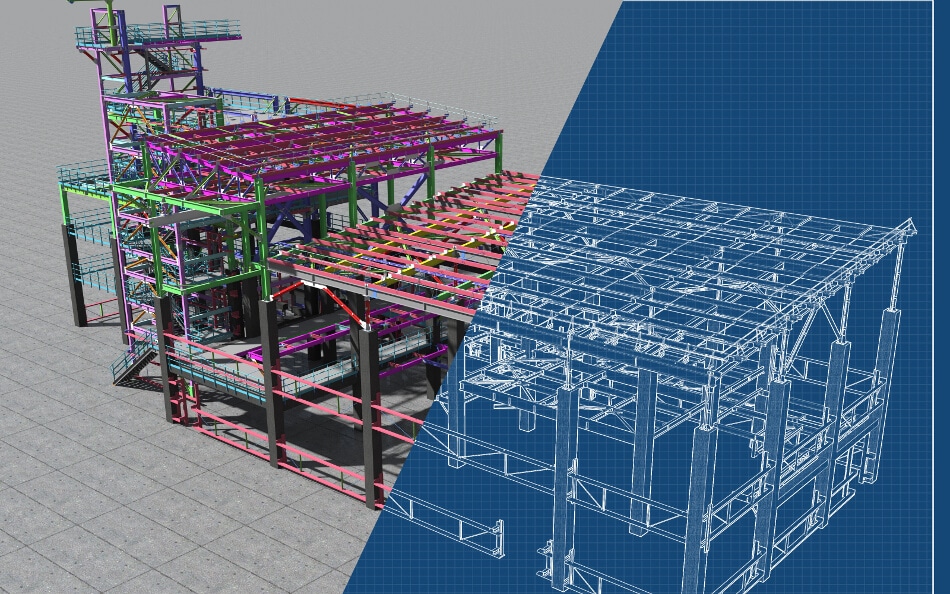This post explores the unique experience that Building provides to all participants
My first memory of building is of an apartment complex that was built next to my house when I was 4 years old. I was fascinated by the construction process(See My Story). I would sit on a convenient pile of dirt near the site and watch the workmen and machines for hours at a time.
My next memory is of a dream I had when I was 7 years old. In the dream, construction machines such as bulldozers and backhoes were lined up for miles. They all moved forward together, knocking down an endless sequence of old, ramshackle, hodgepodge buildings. Behind the moving line of demolition, new, cool, sparkling white buildings immediately popped up to replace the old ones. No doubt this dream started me down my future path of enjoying building projects, and provided the inspiration for concept healthcare buildings I developed in 2008-2010.

These early visions were my first experience of what would become a lifelong joy of working on building projects of all sizes and scales. Even for the few people who profess to be uninterested in building, the built environment imposes itself on their lives in a rather literal way. In my experience, almost all people are fascinated with building on some level. Some develop a deeper understanding of the real processes that comprise Building. Most can appreciate the interior surfaces, furniture, equipment, and artwork that compose the primary elements of our interior spaces.
Some non-professionals are truly talented, and have an innate ability to understand scale, proportion, light, textures, colors, workflows, and many other key design elements. Many may not have the intellectual vocabulary to express why their spaces work so well, and provide wonderful experiences for occupants; however, they have an intuitive grasp of the impact of their design decisions and experience a space positively or negatively.
Understanding how to optimize that personal experience of built space is what Optimized building is all about. First, let’s start with the simple concept that most people do not really experience the building itself, they experience the spaces that are defined by the building. The aspects of the built environment that we directly experience are the following: the scale, proportions, colors, and textures that comprise the surfaces within the space; the natural and artificial light introduced into the space; the environmental quality (temperature, humidity, etc. ) of the space conditioned by hidden mechanical systems. This is a key concept for Optimized building. When we try to define and create “Optimized” buildings, we are really looking for the best Value (cost/reward ratio) and process to create optimized experiences of spaces. For those of us who design and build buildings, this emphasis on experience allows for a different way of thinking throughout the building process.
Another aspect of building that is both frightening and alluring is that it requires ideas to be formulated and set down on paper (e.g., architectural plans and construction documents) or digitally in Building
Information Models, BIMs. Very few of the impacted parties (Owners, architects, contractors, suppliers…) fully understand the impact of the drawings (financially, operationally, aesthetically…). Historically, the architect was counted on to communicate the needs and impacts of the project to all the parties. This process always had weaknesses, ranging from people’s ability to read drawings and visualize the various components and products, to ineffective drawings and documents that poorly described the design intent. Today, however, technology has created numerous tools that allow for far greater access and detailed understanding for all parties. This is a critical improvement in the building process because building takes place in hundreds of different places over months and years as the raw materials are mined, transported, manufactured into the building’s component parts, and then finally distributed to a specific project.

Now, and always, building is primarily a virtual business. All the decisions and information that are required to plan and manage the construction are created virtually. Then, all the materials, tools, and people are assembled virtually. Finally, they are transported virtually. It is not until the people, materials, and tools arrive on site that the building process changes from a virtual process into physical construction.
As new methodologies like Optimized Building come online, this will still be true. What will change is how data is structured and shared, and the workflows that define where work will take place. Standards, Data Structures, and Workflow will ultimately determine the timing, quality, and efficiency with which new buildings will be brought to market.
For most people, when making their building decisions, a better understanding of what they will get for their money, and the process to which they will be subjected, will outweigh certain custom features that are typical in today’s building world. For most people, customization needs are limited to various finishes (e.g., floor and wall finishes, colors, lighting, certain casework and millwork, lighting fixtures) that are easily accessible. Most of the time, building elements such as space sizes, configurations, structural systems, HVAC system, etc.… are not understood by clients. Typically, clients don’t understand what they are getting until the building is finished and they have lived with the product for a year or two.
For most people, the traditional building process remains opaque and poorly understood, and is often fraught with uncertainty and frustration. Ultimately, they just close their eyes and take a leap of faith.
Optimized building with a predetermined number of options, a clearly defined budget and timeline, and clearly understood design principles, will be preferable to the more traditional building process.
My preference is for Optimized building. Which do you prefer?
Subscribe to Steve’s Build Blog and stay up to date on optimized building and the innovative solutions required by the future building industry.
Photo by Pedro Lastra on Unsplash
